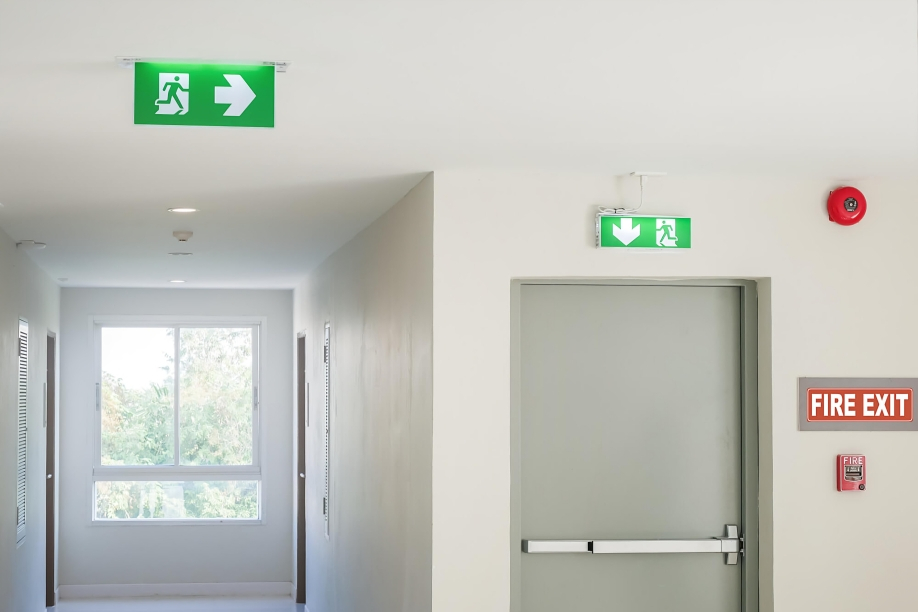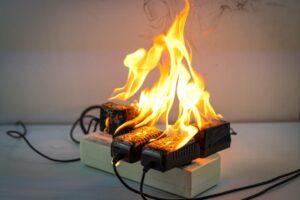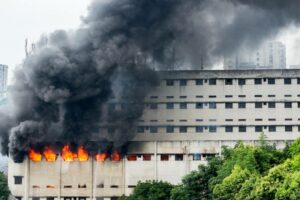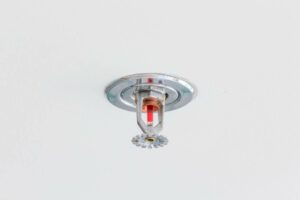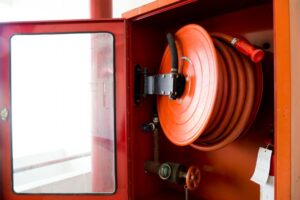A smoke curtain and a fire curtain are both invaluable elements of a building’s smoke control and fire mitigation system.
They are both a type of passive fire protection system designed to limit the spread of smoke and fire throughout a building during an emergency.
They also protect a building’s occupants from smoke inhalation and fire while they are evacuating the building.
Both smoke and fire curtains are usually kept hidden until a fire detection system or fire alarm system activates them.
This makes them the ideal choice for building owners who prioritise their building’s aesthetics or want to conserve space.
However, while these two products may seem similar, they have very different uses.
Continue reading to understand their differences to know where you should install smoke and fire curtains to protect your building, along with its occupants, efficiently.
What is A Smoke Curtain?
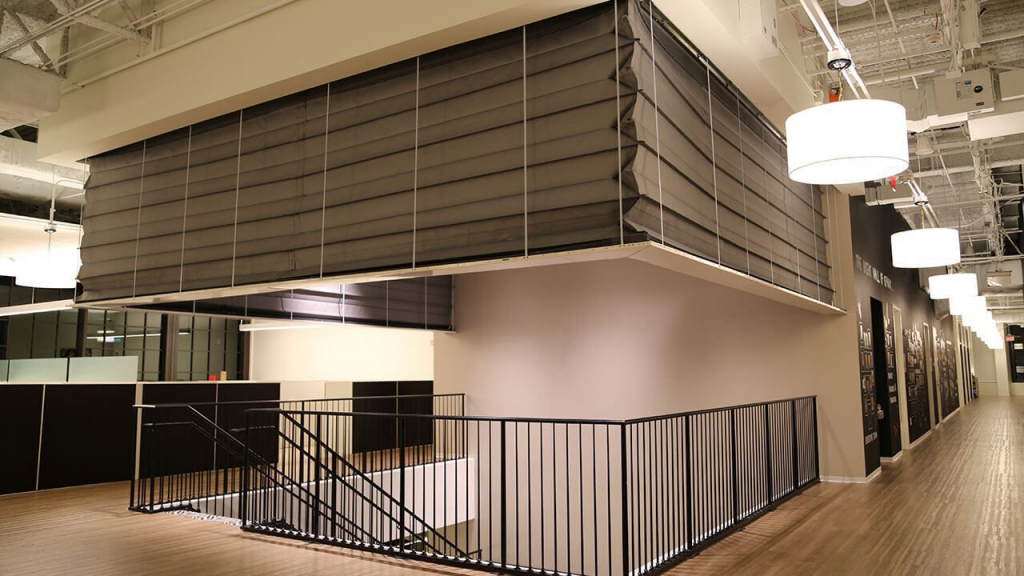
Building owners must ensure that the necessary fire safety systems are in place to protect building occupants not only from fire but also from smoke.
According to the research conducted by the National Fire Protection Association (NFPA), smoke inhalation is more likely to cause death than burns from a fire.
Therefore, smoke curtains are the ideal solution not only for smoke containment but also as a safety measure against smoke inhalation.
It creates a physical barrier against smoke by sealing off elevators and other large openings where smoke can quickly travel through a building.
Once tripped by a fire detection or alarm system, the smoke curtain will automatically descend from the ceiling to a drop position generally above head height, thus creating a barrier from the smoke.
This allows the building’s occupants to evacuate quickly and safely without interfering with the means of escape.
What is A Fire Curtain?

On the other hand, a fire curtain extinguishes fires by containing them until they run out of fuel or oxygen.
They are made of extremely fire-resistant materials and may be used as a compartment wall within a building.
Furthermore, a fire curtain provides a building’s occupants with fire and smoke protection for 60 to 120 minutes.
They will also safeguard the building and its escape routes from exposure to heat, fire, and smoke, thus providing adequate time for building occupants to evacuate.
Read More: The Fire Triangle Explained: What Are The Three Elements
What Are the Differences Between A Smoke Curtain and A Fire Curtain?
Both smoke and fire curtains are commonly used to prevent the spread of smoke or fire and give building occupants more time to evacuate during an emergency.
However, both curtains are made of different materials and are suited for different types of buildings.
(A) Type of Fabric
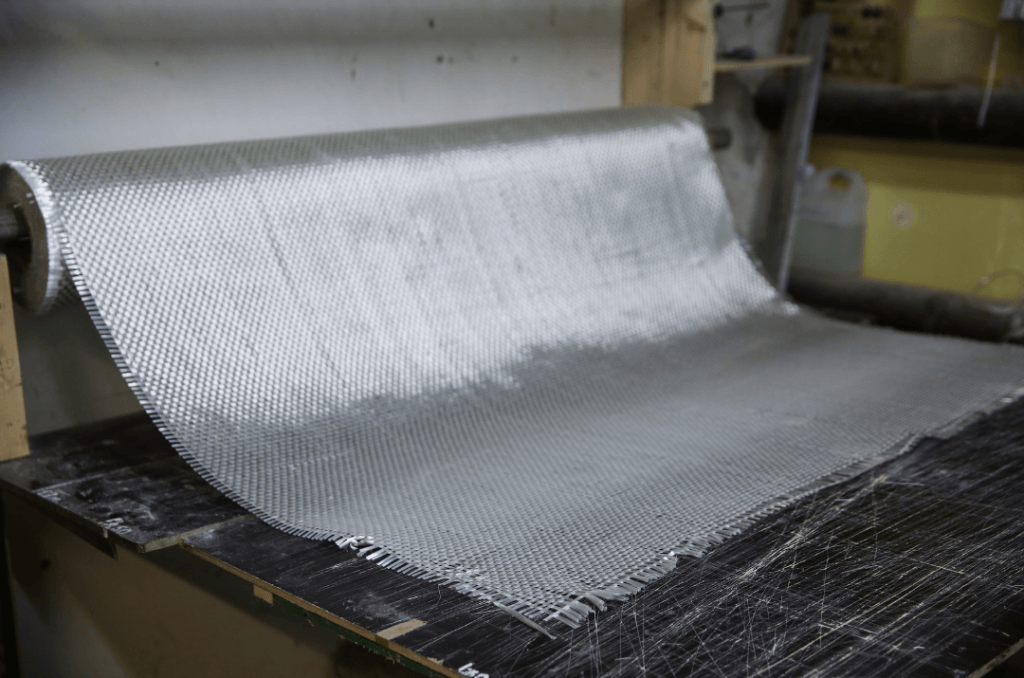
1. Smoke Curtains
Smoke curtains contain fibreglass filaments and use a special coating that prevents the curtain from producing gas or additional smoke in a fire.
2. Fire Curtains
Like smoke curtains, fire curtains also use a special coating and contain fibreglass filaments. However, fire curtains are more likely to be directly exposed to a fire.
That is why fire curtains are also made with stainless steel threads and a combination of fibreglass filaments. They give them better resistance to higher temperatures and direct flames.
3. Hybrid Curtains
A hybrid curtain is specially designed for smoke and fire protection. These curtains are made from a fire-rated fabric that can also contain smoke successfully.
(B) Building Application

1. Smoke Curtains
Smoke curtains are commonly installed in:
- Retail premises
- Hospitals
- Residential buildings
- Educational institutions
- Airports
Popular for their minimal footprint, smoke curtains are widely accepted as an opening protective solution for building code requirements for various building types.
Therefore, it is critical that building owners carefully select the appropriate smoke curtains and understand the installation process for an effective evacuation process.
2. Fire Curtains
Fire curtains should be installed in areas with a high concentration of electrical or heat sources and fuel, as they increase the chances of the building catching fire.
Examples include:
- Server rooms
- Kitchens
- Office and printer rooms
- Machinery factories
- Cinemas, etc.
Installing fire curtains in these locations would assure building owners that their building and its occupants are protected from harm, saving them billions of dollars.
Read More: Fire Hazard Awareness in Malaysia: Why Is It Important?
Your One-Stop Solution for Fire Protection Systems
Regardless of their differences, both smoke and fire curtains are an essential part of a building’s fire safety plans.
They help reduce the risk of damage to a building, keep your occupants safer and minimise your building’s downtime and repairs after a fire.
Palcon is a leading fire contractor in Malaysia, supplying, installing and servicing firefighting equipment and fire protection systems since 1973.
Our fire consultants work closely with the Fire Department of Malaysia (BOMBA) to ensure that your building complies with BOMBA regulations and safety codes.

